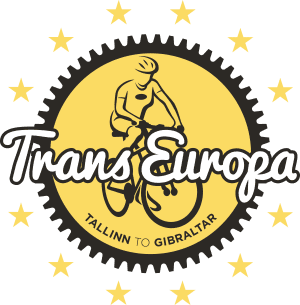Blog
Nyet, Nyet, Sovietski!
Hungary has a complicated history with Russia. Hmmmm…actually, maybe not. It is pretty clear-cut! Our 2023 Trans-Europa Content Creator, Ethan Weil, and I learned more about Hungary under Soviet rule during a bike tour that we took in Budapest entitled ‘From Fading Communism to…’
It turns out the 1956 uprising wasn’t the first time the Russians had crushed the hopes of the Hungarians. In 1848, they also sided with the Hapsburg monarchy in suppressing the hopes of democratic reformers. During WWII, Budapest was spared until 1944 when Hitler, in order to slow down the Red Army, instructed the Germans and Hungarian Nazis to hold out at all costs. After a 100 day siege, the Russians broke through and destroyed much of the city.
Our first stop on the tour was in an area of the city (Joseph Town) where the fighting in the streets during the 1956 uprising was particularly brutal. Bullet holes can still be seen in the walls of some buildings, over 65 years later. Many of the youths who fought the Soviets were kept in prison until they were 18 and then executed.

Next, we visited the Memorial to the victims of the 1956 revolution which stands over top of the Museum of Ethnography. The site was once a military grounds and there was a statue of Stalin that they tore down during the revolt, leaving just his shoes. Although the Hungarians lost the revolution and many were executed and imprisoned, in the long term the result was a softer version of communism (Kadarism or ‘Goulash Communism’) with more private property and an increased ability to travel.

Museum of Ethnography

1956 Memorial
Our final stop was at the National Cemetery. It is important to note that the Hungarians have removed almost all symbols of Soviet rule. In fact, it is illegal to display the Red Star anywhere in the city. It can only be seen at the Soviet War Memorial near the American Embassy and at the Soviet war graves in the National Cemetery. Even here the government will not maintain them and their upkeep is the responsibility of an anonymous Russian oligarch. In the past, President Putin has visited the site but otherwise, the graves are left alone.

National Cemetery
Not far away was an area dedicated to the men and women who died fighting the Soviets in 1956. We were puzzled by the Hungarian flags flying with holes in the middle but our guide explained that this was the symbol of the revolution. The Hungarians had cut out the hammer and sickle and red star that the communists had placed in the centre of the national flag.

Fittingly, Hungary played a major role in the end of the Soviet empire. As a result of its softer approach to communism, in the 1970’s and 1980’s Germans from the East and the West, who couldn’t cross the German border, were both able to visit Hungary and so it became a place of family reunions. While Hungarians had been allowed to cross their border into the West, in the 1980’s the Hungarian authorities began to allow East Germans to use this exit as well. Once that became widely known, a tidal wave of East Germans headed to Hungary to escape to the West. And once the East Germans saw that this was possible they began to wonder what else was possible…like, say, tearing down the Berlin Wall!
While the city has successfully rid itself of most Soviet era symbols, their influence still remains in places. Take for example, the Marriott in Budapest. This hideous structure certainly wins the prize for ugliest hotel on the planet – Soviet Cold War bunker chic. Worse yet, it is situated right on the beautiful Danube River right across from the beautiful Royal. Palace.

As we learned from our historical bike tour, a city like Budapest has a complex and fascinating history and it is always worthwhile to learn more about the cities and countries on the route of the Trans-Europa Cycling Tour. You never know what you will discover!
Thanks to Akos, the owner of Budapest Bike Breeze, who taught us about Budapest’s Soviet past and answered all our questions with honesty and incredible patience
RELATED
TOUR

Trans-Europa
Join us on this spectacular 2 1/2 month cycling adventure across Europe. The route passes through eleven countries, starting in Tallinn and finishing...
 REGISTER NOW
REGISTER NOW




Leave a Comment for "Nyet, Nyet, Sovietski!"